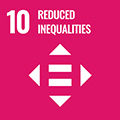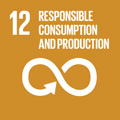- Docente: Nadia Burani
- Credits: 10
- Language: Italian
- Teaching Mode: Traditional lectures
- Campus: Bologna
- Corso: First cycle degree programme (L) in Political, Social and International Sciences (cod. 8853)
Learning outcomes
By the end of the course the students will: - master the basic tools for the study of the behaviour of the main economic agents (consumers, firms, government) and of their interactions in the markets. - know the basic theoretical instruments for the understanding of the redistributive effects of public policies, with particular reference to the Italian case.
Course contents
ORGANIZATION OF LECTURES:
The course is organized with a part of lectures taught online on MS TEAMS (30 hours) and another taught in presence (30 hours). The number of students allowed in class is determined on the basis of class capacity and by the health and safety provisions that deal with the pandemic emergency. In case more students want to attend classes in presence than permitted by the rules, a system of shifts will be organized so to allow students to participate. Regardless of the health-related conditions and the specific organization of the course, students will be able to follow the lessons of the entire course remotely on MS TEAMS.
PROGRAM OF THE COURSE:
Introduction
1. Preliminaries: themes of Microeconomics
2. Mathematical tools
Part I: Consumption and Production Decisions
Consumption Decisions
3. Consumer choice
4. Individual and market demand
Production Decisions
5. Production and technology
6. Production costs
Part II: Market Structure
Perfect Competition
7. Profit maximization and supply
8. Analysis of perfectly competitive markets
Monopoly
9. Market power and monopoly pricing
Oligopoly
10. Models of duopoly
Readings/Bibliography
Pindyck, R.S. e D.L. Rubinfeld: Microeconomics, Pearson, Prentice Hall, 9th edition, 2018.
Supplementary material:
- course's website http://nadiaburani.altervista.org/microsposi2020.html
- Insegnamenti Online
Teaching methods
Lectures and tutorials
Assessment methods
The final assessment consists in awrittenexamination with multiple-choice questions, numerical exercises and theoretical questions.
Students who attend all lectures have the possibility to undertake a mid-term examination on the first part of the programme plus a final examination on the rest of thesyllabus.
Teaching tools
Tutorials will be provided, on a weekly basis.
Office hours
See the website of Nadia Burani
SDGs




This teaching activity contributes to the achievement of the Sustainable Development Goals of the UN 2030 Agenda.
